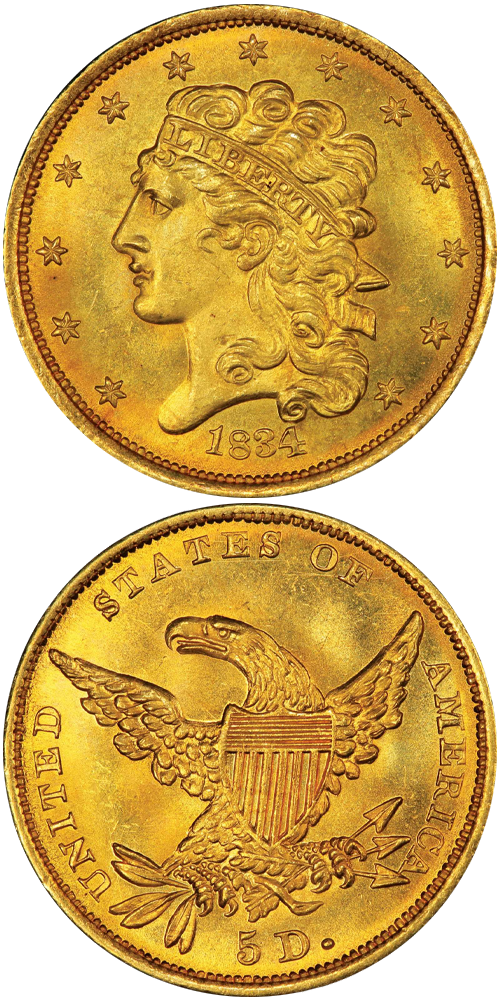1834 Classic Head Half Eagle
After the New Tenor half eagles went into production on August 1, 1834, they remained a consistent news item for much of the summer and fall. Editorials against the Bank of the United States in pro-Jackson newspapers railed against the bank's monopoly power and latched upon the new half eagle as a symbol of it, complaining that the bank stockpiled the gold rather than paid it out, though the political polemics of this era were not often an accurate reflection of reality "The rapid circulation of the Jackson currency, the gold eagles and half eagles...is annoying the friends of monopoly and the Bank beyond all conception," the New York Evening Post published just two weeks after the new coins were introduced. The Bank of the United States, located nine blocks down Chestnut Street from the Philadelphia Mint, was the largest depositor of gold at the Mint in this era. The followers of President Jackson's populist anti-bank rhetoric didn't understand or care about banking reserves or the importance of gold in international banking, preferring to shake their fist at the clouds in anger for the control the bank wielded over the national economy. Jackson's veto of the bank's recharter is widely seen as causing the Panic of 1837, the first long national depression. Some scholars place greater importance upon other issues, including the bursting of the Western land bubble in 1836.
More than 650,000 1834 Classic Head half eagles were coined between August 1 and the end of the year, the largest mintage of any issue of the Classic Head type. Most were the Plain 4 variety, as here. Though plenty of these survived, even in Mint State, gems are significant rarities. PCGS has graded submitted examples finer than MS-64 on only five occasions.
The example to the left was sold by Stack's Bowers Galleries in the D. Brent Pogue Part IV Auction, where it realized $111,625.






